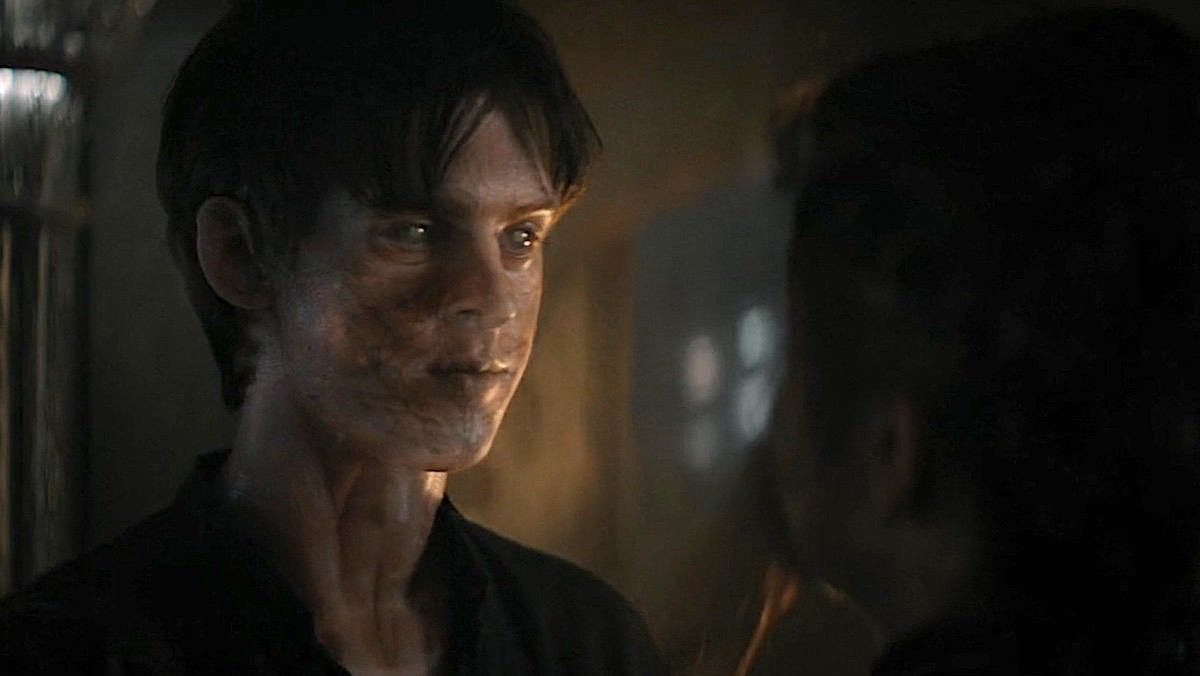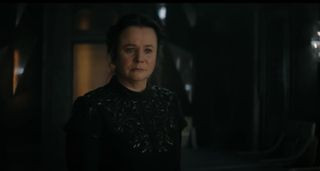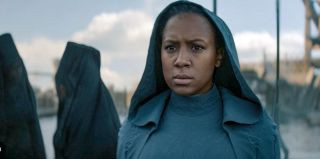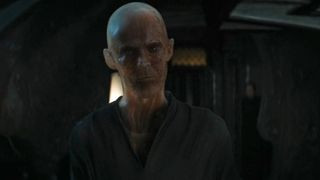Watching a person transform their appearance to perfectly mimic someone deceased is inherently unsettling. In the universe of “Dune,” this bizarre phenomenon is a reality, embodied by shape-shifting individuals known as Face Dancers. As seen in the intriguing conclusion of “Dune: Prophecy,” this concept takes center stage, and we’re here to dissect everything you need to understand about these enigmatic beings.
 A young man with strange eyes and translucent skin
A young man with strange eyes and translucent skin
The unsettling transformation of Griffin Harkonnen into Sister Theodosia in “Dune: Prophecy” highlights the mystery of Face Dancers. (Image credit: HBO/Max)
The Enigmatic Bene Tleilax and Their Creations
Face Dancers are not naturally occurring individuals but rather engineered humans, creations of the Bene Tleilax. This clandestine society of genetic manipulators, originating from the isolated planet Tleilaxa, is notorious for their unorthodox and often ethically questionable practices. Beyond Face Dancers, their genetic tinkering extends to artificial eyes, gholas (cloned bodies from the deceased), and even manipulated versions of Mentats, the human computers of the Dune universe. The Bene Tleilax operate in the shadows, their mastery of genetics making them both feared and invaluable within the Imperium.
 An older woman in a black gown in a dark room
An older woman in a black gown in a dark room
Valya Harkonnen, portrayed by Emily Watson in “Dune: Prophecy,” becomes entangled with the secrets of the Face Dancers and the Bene Tleilax. (Image credit: HBO/Max)
In Frank Herbert’s “Dune” novels, the Bene Tleilax’s morally ambiguous actions are often met with suspicion and disapproval. Face Dancers are particularly feared due to their potential for infiltration and manipulation. Imagine individuals capable of seamlessly adopting any identity, able to penetrate royal courts or military ranks, subtly influencing pivotal decisions. Sister Theodosia’s shape-shifting ability, showcased in “Dune: Prophecy,” appears to be an early manifestation of these advanced and dangerous techniques developed by the Bene Tleilax.
Decoding the Abilities of a Dune Face Dancer
The unsettling scene in the Harkonnen residence provides a chilling first look at a Face Dancer in “Dune: Prophecy.” After a tense exchange between Valya and the Griffin-like figure, a peculiar translucent shimmer washes over his face. Valya then addresses “Theo,” revealing the true identity of the shape-shifter. In a shocking moment, Griffin’s features ripple and reshape, solidifying into the form of Sister Theodosia. This reveal confirms Theodosia as a Face Dancer, a Bene Tleilax creation with the extraordinary ability to not only mimic appearances but also absorb and project the knowledge of those they impersonate.
 A woman in a blue cloak and robe near a harbor
A woman in a blue cloak and robe near a harbor
Jade Anouka as Sister Theo in “Dune: Prophecy,” revealing the unsettling truth of her Face Dancer identity. (Image credit: HBO/Max)
Face Dancers in “Dune” echo mythological shape-shifting entities found in various cultures worldwide. However, in the Dune universe, these beings are products of deliberate genetic engineering. The Leilaxu scientists cultivate them for purposes that are as dangerous as they are clear. These shape-shifting agents represent a potent and volatile asset within the Imperium, capable of causing widespread chaos and disruption.
The Bene Tleilax, a strictly male-dominated religious order, share similarities with the Bene Gesserit Sisterhood in their use of genetic manipulation. However, they differ significantly in their approach and timelines for achieving their goals. The Bene Tleilax operate with a focus on immediate and often clandestine results, contrasting with the Bene Gesserit’s long-term, generational planning.
 A weird bald man with rippling translucent skin
A weird bald man with rippling translucent skin
Sister Theodosia’s unsettling transformation raises questions about the early capabilities of Face Dancers in the “Dune” universe. (Image credit: HBO/Max)
The emergence of Sister Theodosia as a potential early generation Face Dancer integrated into the Sisterhood’s school raises intriguing questions about her future deployment by Valya. With the capacity to perfectly replicate anyone’s face, body, and voice, Theodosia becomes a powerful tool in Valya’s manipulative schemes to regain influence over House Corrino and overcome her adversaries like Desmond Hart. The introduction of Face Dancers into “Dune: Prophecy” adds a layer of intrigue and danger, highlighting the complex web of power and manipulation within the Dune universe.

